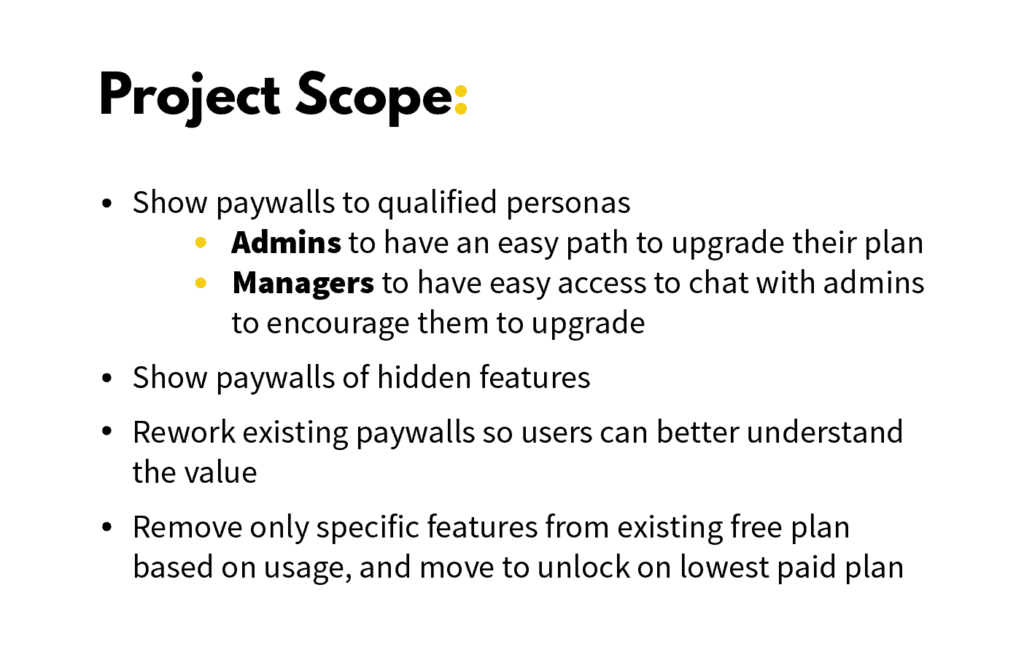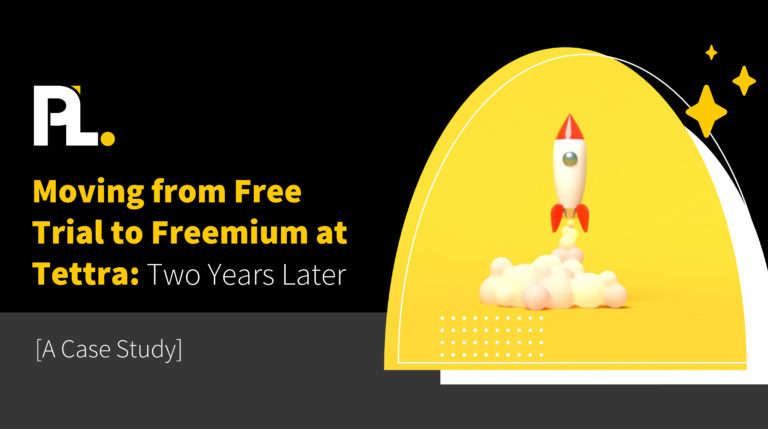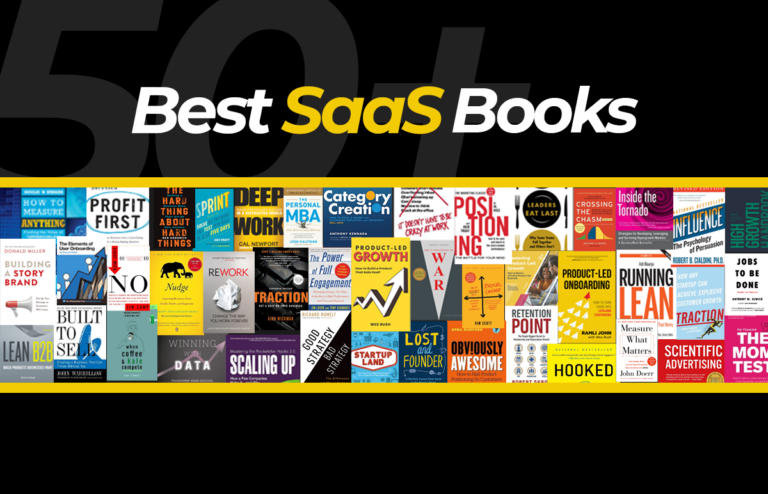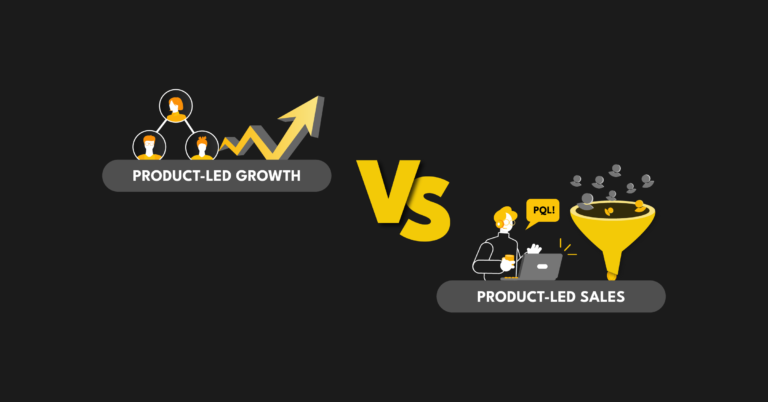Building a product-led growth strategy can seem complicated, but it doesn't have to be.
Product-led businesses have changed the playbook for successful growth strategies, and there’s no reason you can’t take the same path.
Product is now the growth engine for companies like yours. Features and usage are the primary drivers for customer acquisition, retention, and expansion.
Because of that, your growth strategy needs to reflect this.
What is a Product-Led Growth Strategy?
Before you can take cues from a product-led growth playbook, you must first understand what a product-led growth strategy looks like.
Product-led growth is a business strategy that relies on using your product as the main vehicle to acquire, activate, and retain customers. This strategy puts your product at the forefront, as opposed to relying on a Sales team to connect with, nurture, and sell to prospects.
The Benefits of a Product-Led Growth Strategy
You won’t have success building and implementing a product-led growth playbook unless you’re aligned with the benefits of a PLG strategy. Above all others, these three benefits deserve your attention:
- Lower acquisition costs: Think about the most successful PLG companies, such as Slack and Dropbox. These products don’t need to be “sold.” People use them because they’re superior to competing products. They use them because they’re recommended by others. This results in lower, if not zero, acquisition costs.
- Improved user experience: Users find value in the product before paying. This makes for a better user experience from the get-go. It also allows for more efficient upselling.
- Increased scalability: With a sales-led strategy, scaling your business means adding more salespeople. And that results in more overhead. Product-led growth allows for infinite scalability.
The Difference Between Marketing-Led vs Product-Led Growth Strategies
| Marketing-led growth | Product-led growth |
|---|---|
| Prospects must take multiple steps before buying | Prospects can move at their own pace |
| Prospects don’t realize immediate value | Prospects begin using the product sooner |
| A longer “sales cycle” | A shorter “sales cycle” |
In a marketing-led growth strategy, prospects have to jump through hoops to access the product (lead forms, free trials, quotes, demos). Customers don’t realize any value at the marketing stage – it takes quite some time to get them through the hoops.
The focus is on funnels and numbers – generating MQLs and SQLs – with product teams playing a limited role in this process. It’s an insular echo chamber system, with little awareness of the user.
With a product-led approach, the focus shifts to customers, as they are using the product much sooner. Product teams are tied more closely to customer acquisition, as they are creating both the product and the marketing material.
The Playbook: Building and Implementing a Product-Led Growth Strategy
Before we get into the key elements of a great product-led growth strategy, it’s worth highlighting the key drivers behind product-led growth.
- Consumerization of customer expectations: A good user experience has always mattered, but in product-led companies, it’s now the most important thing. Users expect a seamless experience and you need to be able to deliver it.
- The economics behind fast growth: If you can drive demand through your product, you can create a faster and more efficient funnel and marketing and sales teams. Smart, fast growth in a product-led business is a competitive advantage.
- Shorter cycles to launch new features: if you can master an efficient product delivery pipeline, you will innovate faster and receive higher quality, more valuable feedback from your users.
Five Foundational Elements of a Product-Led Growth Strategy Playbook
Now, let’s look at the five foundational elements of a product-led growth strategy.
1. Define your North Star metric
For every customer and every product, you should have a North Star metric that you can align your teams behind.
Measure the successes and outcomes that your product delivers for your customers.
Your North Star metric should guide your entire customer journey. From the moment you onboard customers, guide them into the features and value areas of your product that lead them towards your North Star.
And of course, this metric must be crystal clear to both your company and your prospects. For example, HubSpot’s North Star metric is “the number of weekly active teams.” This is the one measurement, above all others, that measures the company’s long-term success.
2. Transparent pricing
Transparency is vital whether you have a freemium or trial model. Be clear that there is no upfront commitment but differentiate between premium and free usage at the same time.
Transparent pricing is all about having your prospects understand and experience the value of your product at a free and paid level, whilst giving them a clear idea of the budget they need to realize further value.
For our ProductLed Accelerator training program, we make it clear right away what the pricing for individuals, and teams, along with what they receive by enrolling.
Pricing is a real sticking point for SaaS companies. Don’t let your prospects and leads assume that your product is expensive or complex – make it easy for them to see how attainable the next step of their journey is.
3. Apply a paywall
Just as a user hits the threshold of deeper use and integration with your product, you want to expose them to more features while also locking them behind a paywall. 7Shifts is a great example of a company that successfully encourages users to upgrade with paywalls. Here’s the approach they took when defining their scope:

You need to determine the right blend of free and paid features. Ideally, you give your free users enough value whilst withholding enough to encourage upsells.
Make sure the extended value of your product is crystal clear to users. They should be able to drive value from your freemium product (or achieve the first value that your product delivers in a trial model), and as their usage grows, you can apply a paywall.
This kind of incremental pricing model (starting small and experiencing value, then adding further costs down the line) is becoming far more common and makes a big difference to users.
4. Make your product viral
A viral product becomes part of people’s daily routine and is super simple to onboard new users into – no matter how they find your product.
Refer a friend and reward schemes are the tinder for the fire of virality, as they make it easy to turn your customers into advocates.
Enabling growth and creating virality comes down to ease and impact. Use Airtable as inspiration.
Immediately after creating an account, the user is directed to a screen for adding team members. Instead of being happy with one sign-up, Airtable makes it easy for its product to “go viral” within the user’s organization.
Enable your product to expand and allow your customers to invite their colleagues and peers to refer. Create exponential growth that is outside of your control – it’s not as scary as it sounds. Only three percent of consumers trust salespeople, so you’re not getting nearly as much value as you think.
5. Frictionless onboarding
Enabling quick time to value for your users is vital.
As prospects have less and less time to spare, we need to enable them to go into the product and experience value quickly.
In a marketing-led growth approach, prospects might have submitted a form, waited for someone from sales to follow up, and jumped through lots of hoops over weeks and months to finally get their hands on your product.
People move on and lose interest. You only have a few minutes now to fight for their attention – so make your onboarding painless and mistake-free to get them to share a few more minutes with you.
Asana has perfected its onboarding process with the help of “The Asana Guide.” This searchable, centralized content source of best practices helps improve both adoption and retention.
For instance, if a user loses patience and begins to navigate to other pages, the guide provides a centralized database of information that removes friction during the ramp-up phase.
Do you need help building a product-led growth strategy from scratch? We’ll help you in our online 4-week training program. You can learn more about ProductLed Accelerator here.
The Enterprise Product Success Formula in a Product-Led Growth Strategy
So, we know the principles that make a great product-led growth strategy, but what are some of the finer details?
Of course, your product should be a great experience at every stage, but there are some key milestones and features that you should focus on to ensure your product-led growth strategy is a success.
1. Create a consumer-grade product experience
A consumer-grade product experience is easy, effortless, and enjoyable. The key to this is mastering the first interaction. Set user expectations instantly so you can engage and guide users consistently to their first moment of value.
Capture users' desired outcomes, too. If you understand the customer’s desired outcome as part of your onboarding process, you can personalize their journey and create the best possible product experience for them.
And build a nurture track. This means mapping your users' journeys and nurturing them along the way with best practices, webinars, community, and in-app guidance.
2. Easy-to-learn
Contextualize the features that are most relevant to and helpful for users.
Give your users a seamless experience – any friction they encounter will endanger the chances of them converting to paid customers.
Identify challenges and improve the usability and discoverability of your core features, so that getting started with your product is easy and enjoyable. The sooner a user achieves value from your product, the better chance you have of keeping them as customers.
This leads us to our next point.
3. Accelerate time-to-value
Understand and optimize the first mile of your users’ product experience towards achieving their moment of value.
This isn’t siloed in customer success – great user experience starts with the product team. Prioritize the product roadmap to support exceptional experience during demos, trials, and onboarding processes.
So, this could look like creating personalized feedback for users depending on their stage of the journey, in-app walkthroughs, or simplified processes to achieve quick micro results.
4. Become sticky and viral
We touched on virality earlier, but stickiness?
Sticky features are:
- Easy to expand by adding value to users
- Add value over time
- Are hard for users to replace
Now, not all sticky features need to be specially differentiated. A common feature that serves its purpose effectively and does exactly what users want can be as sticky as a highly specific, niche feature. It’s all about delivering value long-term in a way that engages users consistently.
5. Built-in ability to expand
Expansion is a focus for every product-led business, but approaching it the wrong way could see you trapped in the “product death cycle” – releasing new features before users have time to understand them, ultimately pushing them away.
The key to successful, sustainable expansion is to not build more features before your core features have been adopted. Make sure you (and your users) figure out your core feature before you drive to the next one.
Iterate over your core features, improve their usability, and then move on to the next feature with patience.
And to make smart expansion plans, you need to have great feedback.
Collect qualitative and quantitative feedback, especially when you launch a new feature and you see that your ideal customers are using it. Combine a simple score (e.g. “how would you rate our product from 1 (poor) to 5 (great)?”) with open text feedback (e.g. “how can we improve this feature?”).
If you are capturing users’ desired outcomes as part of their onboarding, you will have a clear view of what your users want from your product and can expand accordingly.
6. Easy signup and adoption
We often see that when a company struggles the immediate outcome or decision is to build more products or go to a new market.
But rather than starting elsewhere, focusing on adoption (and avoiding a leaky bucket) is a smarter approach. Especially in B2B, this starts way before a user’s renewal. You want to know a user’s intentions ahead of the renewal date.
So, focus on behavioral retention over a 12-week minimum. Look at user signup dates and the value actions they are taking within your product to determine the likelihood of retention. These value actions will teach you what’s working and what’s not.
You need to be able to look across an account to see a majority of users are achieving value, rather than one or two power users. Otherwise, you’ll end up with churn.
7. Create an Enterprise Grade Ecosystem
Once you have secured a few hundred accounts, with a tested and proven product, look at moving towards an enterprise-grade ecosystem that enables seamless integrations and data sharing through standard interfaces and workflows.
This allows you to scale and deliver more value — based on integrations with other platforms — and is expected by your clients.
If you’re able to be their centric platform, integrated with others, you will deliver more value, become stickier, and become a key part of their operation.
Organizational Alignment in Implementing Product-Led Growth
A product-led growth strategy cannot be ‘just’ a Sales or Marketing effort.
In a product-led growth strategy, teams combine their efforts. They align behind the goals of the company and execute a plan in cooperation.
These are where your teams should be focused when working under a product-led growth strategy.
1. Marketing team goals
- Product launch and positioning
- Driving trials/demos
- SEO & paid media channels
- Social media, podcasts
- Promoting webinars through the app
2. Sales team focus
- Show me vs. tell me: using the product to demonstrate value.
- Product-oriented sales team: where the buyer tends to be in control of the process.
- Using usage and features as levers.
- Land and expand strategy, with incremental spend as a key revenue generator.
- Strong understanding of the competitive landscape.
3. Customer success team goals
- Using automation and measurements to drive adoption at scale, from onboarding to continuous adoption strategies
- Maximizing the outcome of the product
- Dealing with larger accounts and use cases
- Becoming the architects of implementation at a larger scale
4. Product team goals
- Outcome and growth-driven, rather than feature-centric
- Focused on creating and enhancing customer outcomes
- Promoting simplicity, ease of use, and seamlessness
- Helping other teams understand what they’re building
Everybody aligns behind that north star metric, driving adoption by prioritizing usability enhancements and user empowerment.
A product-led growth strategy makes sense for so many businesses, not just SaaS, and I hope you can see how universally useful this system can be.
Join ProductLed Academy to create your strategy and be held accountable to it with your coach, Wes Bush
Creating your SaaS product strategy is just one key element of building a successful product-led business. At ProductLed Academy, we help SaaS founders turn their products into predictable revenue-generating machines. It's a 12-month program, where we focus on one of the nine components you need to master (we spend around six weeks on each of these):
- Vision: What is your company really good at?
- User: Who do you serve best?
- Model: How do you create a ton of value for your users to win?
- Offer: Have you crafted an irresistible free offer for your ideal users?
- Experience: Have you created an effortless path to value for your users?
- Pricing: Is it easy for users to upgrade without talking to anyone?
- Data: Do you know where users are getting stuck in your product?
- Process: Do you have a growth process that enables your team to build out experiments, prioritize the high-impact ones, and launch the ones that are easiest?
- Team: Is your team full of A players capable of taking you to the next level?
While you can have one or more of these dialed in perfectly, if you’re missing one of these key players, you’re going to have a hard time with growth.
Apart from focusing on those key areas of your strategy, ProductLed Academy comes with:
- Weekly 60-minute group coaching call with Wes Bush, where you'll go through each of the components of the ProductLed Method (including pricing) to master a self-serve model.
- Weekly non-negotiable tasks to keep you accountable.
- Access to an exclusive ProductLed Founder Community so you can meet other ambitious founders and receive support 24/7.
- Access to the ProductLed Vault, where you'll gain access to all of our programs (including ProductLed Acquisition and Accelerator), templates, and frameworks.
If you're ready to break through to the next level and scale your product strategy, be sure to check out ProductLed Academy.
Product-Led Growth Strategy FAQs
Everyone has questions about product-led growth, but these are a good starting point for anyone interested in heading down this path.
What are the five go-to-market strategies?
- Product-led growth (PLG)
- Inbound
- Sales enablement
- Account-based marketing
- Demand generation
What is the best growth strategy?
There’s no right or wrong answer to this question. Product-led growth has become one of the most popular strategies for SaaS companies, but all others should be taken into consideration.
How do you drive product growth?
This depends on the growth strategy that you choose. With product-led growth, it’s the product itself that attracts and retains users.
What is the opposite of product-led growth?
Sales-led growth is the opposite of product-led growth. With this, growth is driven primarily by Sales teams. Visitors need to reach out to a Sales team and speak with them before they can try out the product.












